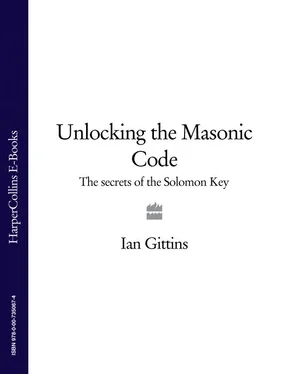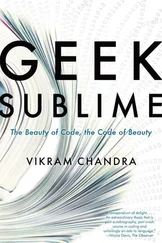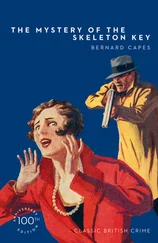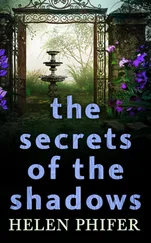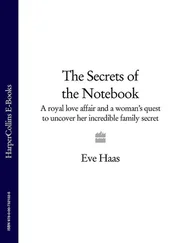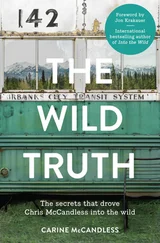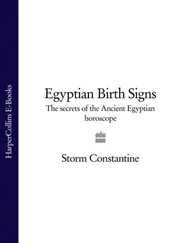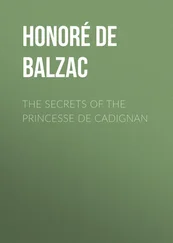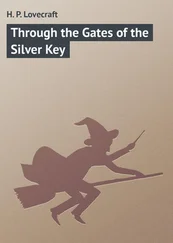Unlocking the Masonic Code: The Secret of the Solomon Key
Ian Gittins

For Mum and Dad
‘May Freedom, Harmony and Love Unite you in the grand Design Beneath th’Omniscient Eye above The glorious Architect Divine’
Robert Burns, The Farewell to the Brethren of St James Lodge, Tarbolton (1786)
Cover Page
Title Page Unlocking the Masonic Code: The Secret of the Solomon Key Ian Gittins
Dedication For Mum and Dad
Epigraph ‘May Freedom, Harmony and Love Unite you in the grand Design Beneath th’Omniscient Eye above The glorious Architect Divine’ Robert Burns, The Farewell to the Brethren of St James Lodge, Tarbolton (1786)
INTRODUCTION
- 1 - THE REAL HISTORY OF FREEMASONRY
- 2 - THE NOTIONAL HISTORY OF FREEMASONRY: GREAT CONSPIRACY THEORIES
- 3 - INSIDE THE LODGE—MASONIC RITUALS AND SYMBOLS
- 4 - MASONIC SYMBOLS—A BRIEF GUIDE
- 5 - FAMOUS FREEMASONS
INDEX
Copyright
About the Publisher
The pseudo-historical fiction of Dan Brown is the publishing phenomenon of the first few years of the twenty-first century. By early 2005, over twenty-five million copies of The Da Vinci Code , the Gordian knot of a detective novel that saw Harvard Professor Robert Langdon in learned pursuit of the Holy Grail, were in print around the globe. Brown’s intricate weaving of mysticism, alternative history and cryptic symbolism into a good old-fashioned pot-boiler clearly touched a nerve in the worldwide popular consciousness.
As the year progressed, and with a Ron Howard-directed Hollywood movie of The Da Vinci Code starring Tom Hanks and Audrey Tatou at an advanced stage of production, Brown acolytes speculated over what the author’s next move would be. Countless Da Vinci Code -fixated chat rooms and fansites hummed with chatter and speculation. At which point, with The Da Vinci Code’s worldwide sales up to forty million, Brown himself revealed exactly where he would be directing Langdon next—into the dark heart of Freemasonry.
Writing on his own website, www.danbrown. com, the author had this to say about the legendarily secretive Masons: ‘My interest sparks from growing up in New England, surrounded by the clandestine clubs of Ivy League universities, the Masonic lodges of our Founding Fathers, and the hidden hallways of early government power.’ His next novel, The Solomon Key , would, he confirmed, be set ‘deep within the oldest fraternity in history—the enigmatic brotherhood of the Masons.’
In truth, it is not terribly difficult to comprehend the appeal of Freemasonry to Brown in a novelistic context. His books are labyrinthine riddles, set in a world of proscribed societies, arcane and complex symbolism and historical facts and suppositions woven into the sort of beguiling conspiracy theories that invariably attract eager adherants. What could suit his creative purposes better than a mysterious, ancient fraternal society with its own mythology founded on an opaque system of secret symbols, rituals and handshakes?
Broadly speaking, there are two schools of thought on the Masons. The first—grounded in reality, and therefore of little use to Brown—is that the Freemasons are a modern anachronism, an eccentric but essentially benign organization of men whose well-developed sense of selfimportance is a minor flaw compared to the many good charitable works that they do. This view holds that, given the increasing average age of the membership, the fraternity is unlikely to survive in any significant form beyond the next two or three decades.
The rival opinion, and the one seized upon by Brown, is that the Freemasons are a shadowy grouping of sinister malcontents bent on subverting society and possibly—eventually—achieving world domination. The more turbo-charged conspiracy theorists out there even argue that the organization is in possession of ancient mystical secrets, of a sacred or even occult nature, handed down to them by the Knights Templar, the famous chapter of medieval warrior knights.
The more pathologically driven detractors point towards the significant role played by Masons in the birth of America—many of the Founding Fathers were Freemasons, as was the first President, George Washington—and imply that the fraternity, even today, still enacts a Machiavellian influence at the very apex of politics and the worlds of finance and business. Such loaded theorizing, naturally, is manna from heaven to a novelist as shrewd as Dan Brown as he sets about weaving a work of charged fiction like The Solomon Key .
So, are the Freemasons a bunch of harmless old duffers indulging in a little fanciful role-playing—essentially, Britain’s Rotary Club or America’s Elks with their trouser-legs rolled up—or are they mystical, scheming figures with powers and knowledge beyond the ken of the uninitiated? To gain a little insight, let’s begin by examining the organization’s philosophy and modus operandi .
Frequently described as a ‘peculiar system of morality veiled in allegory and illuminated by symbols’, Freemasonry remains the largest and most high-profile/notorious secular fraternal society in the world. While it is known to have descended from the stonemasons’ guilds of medieval times, as we shall explain in depth in Chapter 1: The Real History of Freemasonry, some argue that its lineage extends right back to the time of King Solomon—a deeply tenuous claim, but one that we shall examine in greater depth later in this book.
Few dispute that Freemasonry is in decline, with the fraternity’s membership numbers consistently dropping since the Sixties. Nevertheless, it remains a formidable organization. There are still more than five million Masons worldwide—four million of them in the United States, 500,000 in England and Wales, slightly under 400,000 in Scotland, and significant numbers in France, Canada, Australia and Ireland, as well as smaller but active chapters in Latin America, India, Japan, the Philippines and Israel.
At heart—leaving aside, for a second, its complex and intimidating historical provenance—Freemasonry is a benevolent philosophical movement. Members are taught to develop their character and altruistic instincts via a series of catechisms and ritual dramas, through which they progress through the fraternity until they are initiated as a Master Mason. The rituals and ceremonies are so arcane—and we shall detail them in full later in the book—that one almost suspects the movement’s legendary secrecy is intended primarily to save them from the howls of mockery of the outside world.
Yet setting such scepticism temporarily aside, the Masons’ motivations are largely noble ones. Initiates are told to cherish and propound the three central tenets of brotherly love, charity towards fellow Masons and the wider world, and truth. On a purely practical level, there is no denying the good works carried out by the fraternity: it is estimated that British Masons spend around £3 million per year on charitable projects. In America, the figure is nearer to $1 billion.
The Masons have suffered a degree of ridicule in recent decades due to the impenetrable rituals and extraordinary ceremonies that have defined the movement in the public imagination. Their formalities can seem ludicrously exclusive and laughably pompous. Dan Brown possibly deserves a degree of grudging recognition for his achievement in making a centuries-old, arcane grouping of pensioners and retirees appear like a dangerous and intimidating global force blessed/burdened with mystical secrets and knowledge.
Читать дальше
